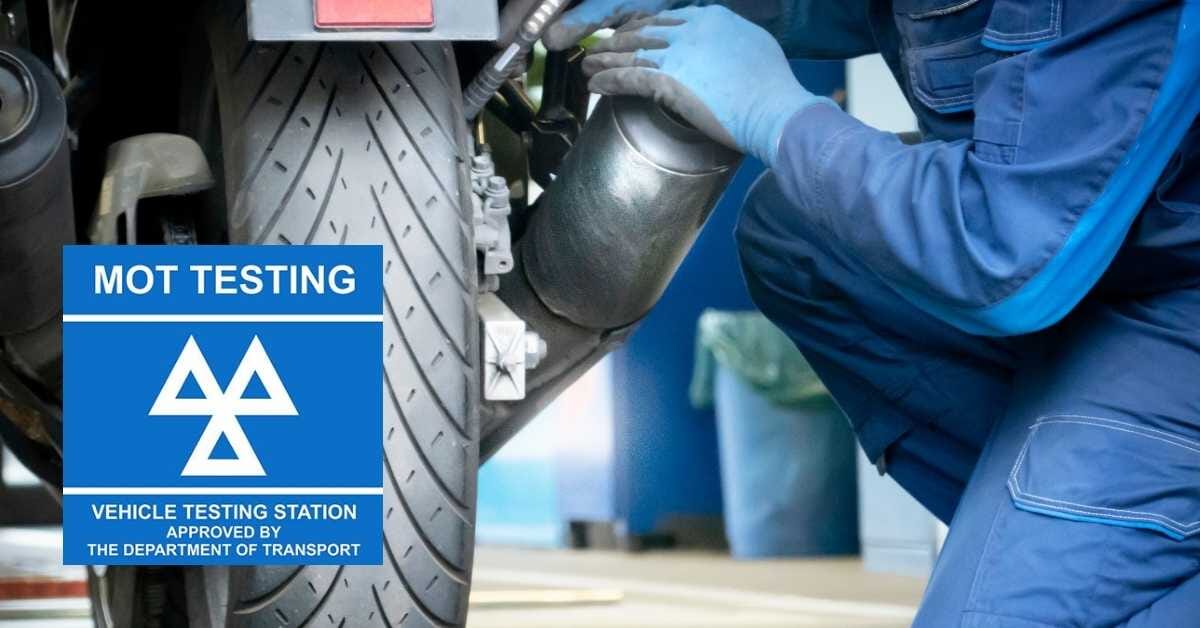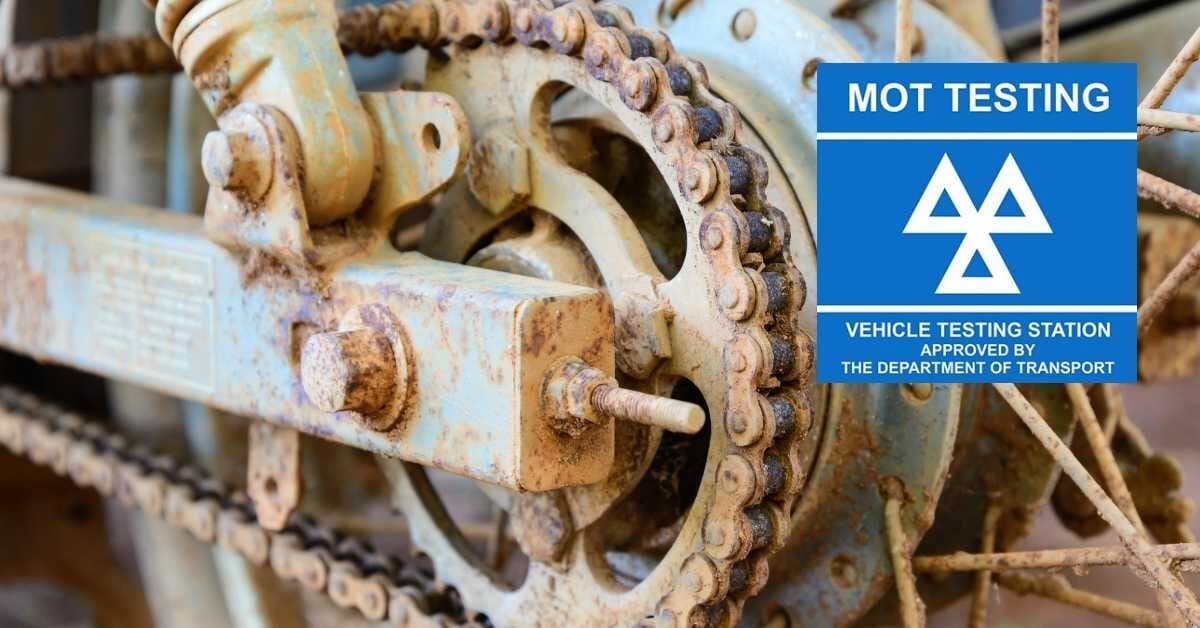Motorbike MOT Checks – How to Pass a Motorbike MOT

Taking your motorbike in for an MOT can be a stressful experience. Standing in a - usually - cold and uncomfortable waiting room as a stern-looking tester goes over your pride and joy with a fine tooth comb. All the time worrying that you might be walking home, and paying out for repairs and retests.
A quick check over of your motorcycle at home - and an idea of what they will be looking at - will highlight if there are any potential problems before you trot off to the test centre. It could save you that stress - and the retest fees too.
Here’s what to look for:
Headlamps and lights
Issues with lighting are amongst the most common reasons for an MOT Failure. The tester will look at all front and rear lights, indicators and reflectors, assessing:
- The general condition
- Whether they work properly
- That they’re secure
- If the headlamp is the correct colour
- That the aim and pattern of the headlamp is correct
This will only take a few minutes to check at home. A quick visual check will uncover any breakages, cracks or looseness. Have someone else sit on the bike and operate the lights, to make sure they’re all functioning properly. While you're at it, have them press the horn to see whether it’s working - the tester will be checking that too.

Steering and suspension
The tester will focus on the operation, security and general condition of every aspect of the steering and suspension:
Front forks
- The handlebars and grips
- Steering head bearings
- The rear swinging arm
- Shock absorber(s) and their damping
Start by checking your handlebars are firmly attached and straight, and the grips are in good condition and secure.
Turn the bars lock-to-lock, checking for any notches or a rough feel, which could indicate bearing problems. As you do this, make sure all cables and/or hoses are routed correctly, and the controls operate freely and are properly adjusted.
Check forks and shocks for leaking oil, and that they’re also securely attached. Grab the forks at the bottom and give them a good push and pull. If you feel movement it could be a loose head bearing. Do the same at the rear, to assess swingarm bearings.
Bounce the bike at front and back, to make sure the suspension damping is working as it should.
Wheels and tyres
Wheels and tyres should be your next port of call. Again, the MOT test centre will be looking for general condition and legality.
First, make sure your bike has the correct size and type of tyres fitted. Check the tyre pressures are correct using a reliable pressure gauge. Do this when the tyres are cold, as the pressure will read higher when they're hot.
Inspect the tread - the minimum for motorcycle tyres in the UK is 1.0 mm - and both sidewalls for cracks, cuts or perishing due to age. Look for any foreign objects, like nails and screws.
Check your wheels for loose or damaged spokes, dents or cracks on the rims and that all securing bolts are present and correctly tightened.
Brakes
Brakes must be in good condition, fully operational and perform as expected to pass an MOT. The tester will be looking at the discs, pads (or shoes on drum brakes), hoses and cables and ABS warning lights too, if applicable.
Again, start with a visual check, looking for any rust, scoring or a large lip on the edge of the disc(s) from excessive wear, and that there’s plenty of friction material left on the pads.
Next inspect hoses and/or cables for any cracks, cuts or perishing. Get your hands in there and feel along the length of each one. If you come across something that doesn’t feel right - bulges, soft spots etc - investigate further. Have a good look at the fittings too, checking for corrosion, cracks, misalignment, and leaking fluid.
Finally, test the operation by gently rolling the bike forward and trying both the front and rear in turn.
Exhaust and fuel system
The exhaust system needs to be complete, secure and as quiet as possible - if you have an ‘aftermarket’ end can or system, it must be legal for road use.
The fuel system - including tank, fuel taps and hoses - should also be secure and free from leaks.
Drive chain and sprocket
These will be inspected to check that the chain isn’t too loose, too tight or worn. The tester will also want to make sure the sprockets aren’t excessively worn and are secure. There also must be a chain guard securely in place too.
Your owners or workshop manual should have instructions on how to check and adjust the chain.

Other basic checks
The tester will also be checking that:
- The frame is free from cracks, damage, distortion or corrosion;
- The rider’s seat is attached securely;
- The throttle operates correctly;
- There are legal and legible registration plates, vehicle identification and frame numbers;
- The clutch lever isn’t damaged;
- Footrests are securely fitted;
- The wheels are correctly aligned.
This is by no means a comprehensive list of what an MOT tester will be looking at, it's simply a basic guide to help you make sure all the major components and areas are covered.
You can find a complete list of what will be checked at the test centre on the Gov.uk site here: https://www.gov.uk/government/publications/motorcycle-parts-checked-at-an-mot/motorcycle-parts-checked-at-an-mot#more-information. You can also contact your nearest MOT test centre for clarification.
Remember, if you’re unsure about the condition of any component on your motorcycle or don’t feel confident enough to check and assess it yourself, consult a professional.
If any cables or hoses need replacing, use the Part Finder on our website to search for kits to fit your motorcycle.
Venhill tyre pressure gauges come highly recommended too. See them here.


